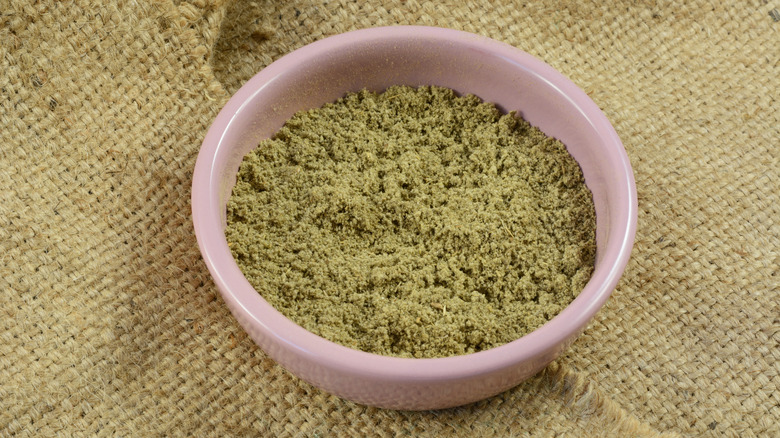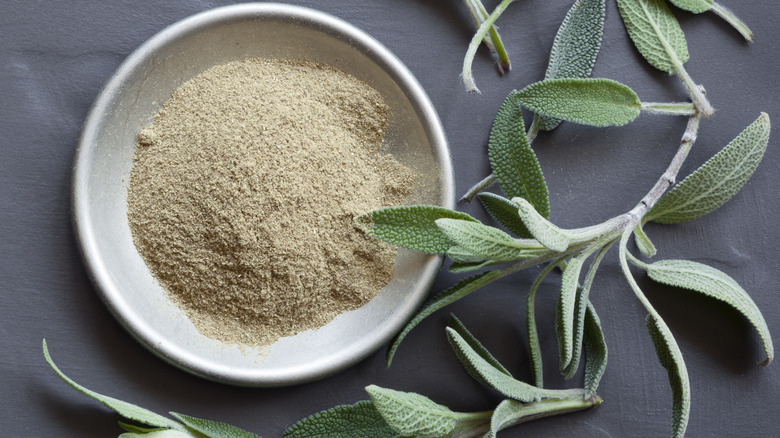The 2 Types Of Dried Sage, Explained
When it comes to spices, there are some you can live without and then there are the spices every kitchen must have. Sage is one of those. Many cooks use sage when it's time to trim the turkey or make sage dressing. It's also fabulous on vegetables, potatoes, fish, and chicken. And if that's not enough, sage has an impressive reputation for healing.
According to MasterClass, as a well-respected herb, sage has been used since ancient times in Europe and Asia to treat digestive issues, joint pain, kidney failure, and cold and flu symptoms. Today, it's still used as a natural remedy that may be helpful in treating menopausal symptoms, high cholesterol, and cognitive functions, per WebMD.
Sage is impressive in many ways; however, most of us grab it only to use in the kitchen because of the wonderful earthy, somewhat minty flavor that it adds to dishes. Although you may often use fresh sage on turkey day, there are also two dried versions of the herb: rubbed and dried. But when do you use each one?
Rubbed sage
You don't see the word "rubbed" often on a spice bottle; however, it's commonly seen on this type of dried sage. My Spicer explains that this dried herb gets its name from how it's made: by rubbing sage leaves together. The result is the fuzzy, soft-rubbed sage you see in the spice aisle.
Because it is processed more gently, rubbed sage is a light and airy version of the dried herb, so you cannot swap it for ground sage without changing the quantity in a given recipe. Lifehacker recommends using double the amount of rubbed sage if the recipe calls for ground.
Rubbed sage has a mild flavor (mint, citrus, and earthy notes) and is best in dishes such as roasted turkey, or any poultry. It's also perfect for pork, beef, lamb, or fish. You might use it when making sausages or if you're making an Italian or Greek dish.
Ground sage
Ground sage doesn't have the soft and fuzzy look of rubbed sage. It looks much like the other spices in your cabinet when it's ground up. Lifehacker explains that ground sage is just as it sounds; it's ground up rather than rubbed, using every part, even the stems, which creates a fine powder.
Ground sage is more potent than rubbed sage since the leaves are broken down further. This releases the aromas and flavors of sage more effectively and gives your dishes an intense sage flavor.
It can be overpowering in large quantities compared to rubbed or fresh sage, so it is best in brothy dishes like soups, tomato sauces, and beans (via The Spruce Eats). It also adds nuance to spice rubs for meat or potatoes if you enjoy the strong sage flavor. In fact, if you use poultry seasoning, you may have been sprinkling ground sage into your dishes without knowing it.


